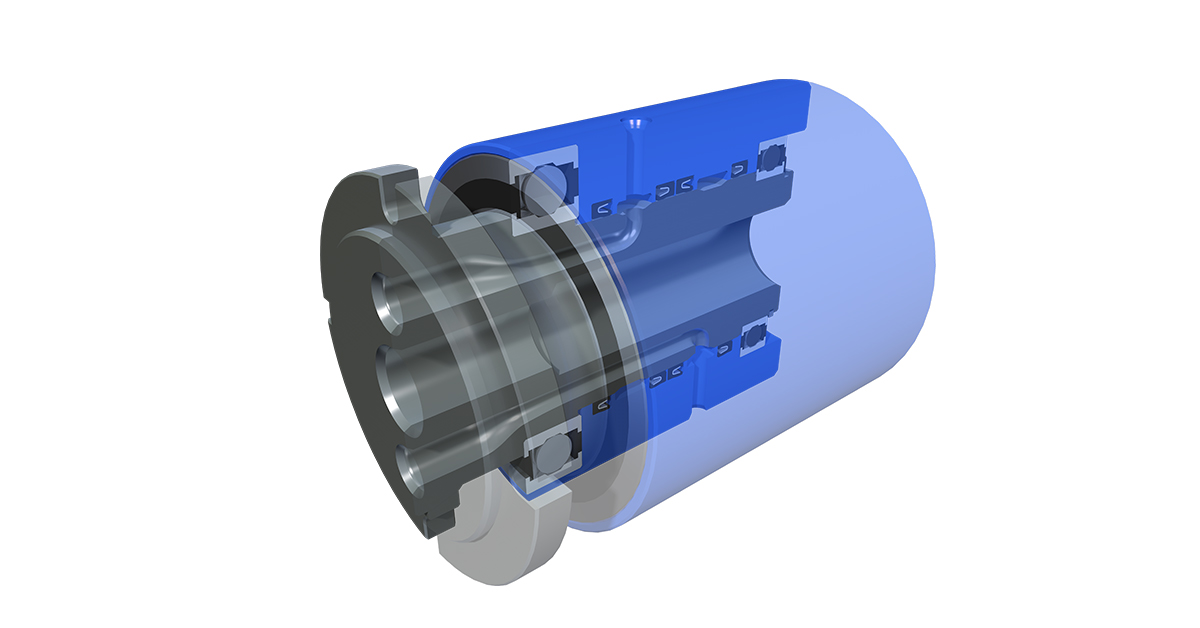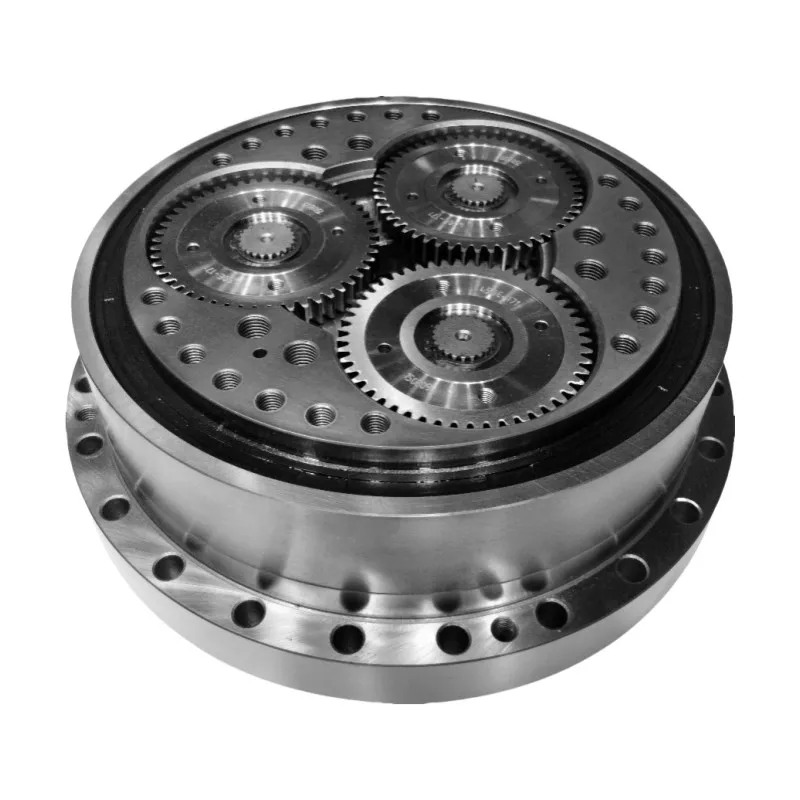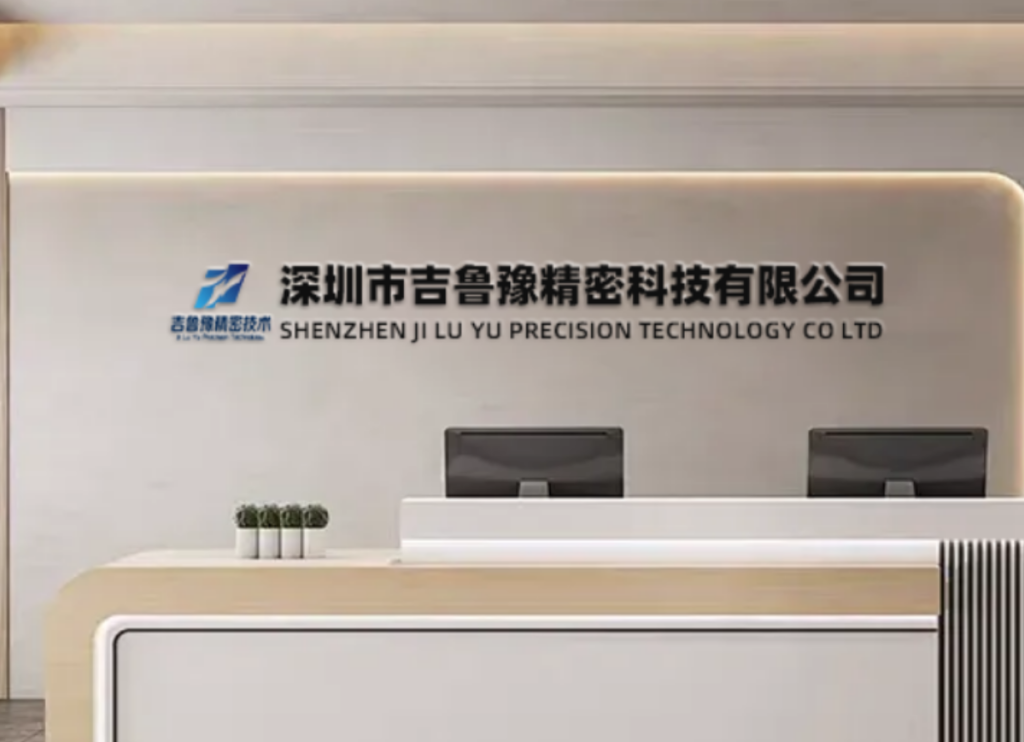9 Critical Manufacturing Techniques for High-Performance Precision Bearing Robotic Arm Systems
Introduction: The Foundation of Robotic Motion Accuracy
The integration of precision bearing robotic arm systems represents a cornerstone technology in modern industrial automation, providing the essential foundation for accurate, reliable, and efficient robotic motion. These sophisticated bearing systems serve as the critical interface between moving components, enabling precise positional control while supporting substantial loads and moments. The precision bearing robotic arm technology has evolved significantly to meet the demanding requirements of contemporary robotics, where sub-micron accuracy, high stiffness, and long-term reliability are paramount. As robotic applications expand into more demanding fields such as semiconductor manufacturing, medical robotics, and aerospace assembly, the quality and precision of bearing systems directly determine the overall performance capabilities of robotic systems.
At JLYPT, our expertise in precision CNC machining has established us as leaders in manufacturing high-performance components for precision bearing robotic arm applications. This comprehensive technical analysis examines nine essential manufacturing techniques that enable the production of reliable bearing systems, while exploring the engineering principles that ensure optimal performance across diverse industrial applications and challenging operating conditions.
1. Fundamental Principles of Precision Bearing Technology
1.1 Bearing Architecture and Classification
Understanding the complex architecture of precision bearing robotic arm systems is fundamental to appreciating their performance characteristics and manufacturing requirements in robotic applications.
Key Bearing Components:
-
Raceway Geometry: Precision-ground tracks for rolling element guidance
-
Rolling Elements: Balls, rollers, or needles of controlled size and geometry
-
Cage Design: Precision components for element separation and guidance
-
Sealing Systems: Multi-stage protection against contamination
-
Mounting Interfaces: Precision surfaces for accurate component alignment
Performance Classification Table:
| Bearing Type | Accuracy Grade | Speed Factor | Stiffness | Load Capacity |
|---|---|---|---|---|
| Deep Groove Ball | ABEC 1-7 | 1.0x | Medium | Radial focus |
| Angular Contact | ABEC 5-9 | 1.3x | High | Combined loads |
| Cylindrical Roller | ABEC 1-5 | 0.8x | Very High | Radial loads |
| Tapered Roller | ABEC 1-3 | 0.7x | High | Combined loads |
| Crossed Roller | ABEC 5-7 | 0.9x | Extreme | All directions |
1.2 Precision Grades and Applications
Precision Bearing Performance Categories:
| Accuracy Class | Running Accuracy | Application Scope | Vibration Level |
|---|---|---|---|
| ABEC 1 | Standard | General purpose | Normal |
| ABEC 3 | Good | Industrial robots | Low |
| ABEC 5 | High | Precision automation | Very Low |
| ABEC 7 | Very High | Machine tools, robotics | Ultra Low |
| ABEC 9 | Ultra High | Semiconductor, medical | Minimum |
2. Advanced Material Selection and Engineering
2.1 Comprehensive Material Strategy
The performance of precision bearing robotic arm components depends on advanced material selection where hardness, fatigue resistance, and dimensional stability are carefully optimized.
Material Selection Matrix for Bearing Components:
| Material Specification | Component Application | Hardness (HRC) | Fatigue Life | Corrosion Resistance |
|---|---|---|---|---|
| SAE 52100 | Standard bearings | 58-62 | 1.0x | Moderate |
| M50 Tool Steel | High-temperature | 60-64 | 1.2x | Good |
| 440C Stainless | Corrosive environments | 55-60 | 0.9x | Excellent |
| Ceramic Hybrid | High-speed | 70-75 | 2.0x | Exceptional |
| Cronidur 30 | Extreme conditions | 60-65 | 3.0x | Superior |
| BG42 | Aerospace applications | 58-62 | 1.5x | Very Good |
2.2 Specialized Material Processing
Advanced Heat Treatment Processes:
-
Martensitic Hardening: Through-hardening to 58-65 HRC with controlled microstructure
-
Case Carburizing: Surface hardening with case depth 0.5-2.0mm
-
Carbonitriding: Enhanced surface properties for improved wear resistance
-
Austempering: Bainitic microstructure for superior toughness
Surface Engineering Applications:
-
Superfinishing: Surface roughness Ra 0.05-0.1μm for reduced friction
-
Phosphating: Surface treatment for improved run-in characteristics
-
Black Oxide: Corrosion protection with minimal dimensional impact
-
Laser Hardening: Localized surface treatment for specific wear areas
3. Precision CNC Machining Methodologies
3.1 Multi-Axis Machining for Bearing Components
The manufacturing of precision bearing robotic arm components requires advanced CNC machining capabilities to achieve the complex geometries and tight tolerances necessary for optimal performance.
5-Axis Simultaneous Machining Applications:
-
Complex Raceway Geometries: Single-setup machining of precision bearing tracks
-
Integrated Mounting Features: Precision machining of flange and alignment surfaces
-
Micro-Machining: Production of miniature components with sub-micron tolerances
-
Hard Machining: Precision machining of hardened components to final dimensions
Critical Machining Parameters for Bearing Components:
| Manufacturing Process | Material Type | Cutting Speed (m/min) | Feed Rate (mm/rev) | Depth of Cut (mm) | Tolerance (mm) |
|---|---|---|---|---|---|
| Precision Grinding | Hardened Steel | 25-35 | 0.5-2.0 | 0.01-0.05 | ±0.001 |
| Hard Turning | Hardened Steel | 80-120 | 0.03-0.08 | 0.1-0.3 | ±0.005 |
| Honing | Various | 30-60 | 0.1-0.5 | 0.005-0.02 | ±0.002 |
| Lapping | Hardened | 10-30 | N/A | 0.001-0.005 | ±0.0005 |
| Profile Milling | Steel Alloys | 100-150 | 0.05-0.15 | 0.3-1.0 | ±0.010 |
3.2 Specialized Manufacturing Processes
Raceway Manufacturing Excellence:
-
Centerless Grinding: Diameter control within ±0.001mm
-
Profile Grinding: Precision grinding of complex raceway geometries
-
Superfinishing: Final surface refinement to Ra 0.1-0.2μm
-
Geometry Verification: Comprehensive measurement of raceway profiles
Rolling Element Production:
-
Form Grinding: Precision geometry control of rolling elements
-
Size Sorting: Automated dimensional sorting to 0.0001mm groups
-
Surface Finishing: Advanced finishing processes for extended life
-
Quality Verification: 100% inspection of critical dimensions
4. Bearing System Design and Integration
4.1 Advanced Design Principles
The design of precision bearing robotic arm systems requires sophisticated engineering approaches to optimize performance for specific robotic applications.
Design Optimization Factors:
-
Load Distribution Analysis: Finite element analysis for optimal stress distribution
-
Stiffness Optimization: Balancing static and dynamic stiffness requirements
-
Thermal Management: Heat dissipation and thermal expansion considerations
-
Life Calculation: Advanced life prediction models based on application conditions
Integration Considerations:
-
Mounting Interface Design: Precision mounting surfaces and alignment features
-
Preload Optimization: Controlled preload for optimal stiffness and life
-
Sealing Systems: Multi-stage sealing for environmental protection
-
Lubrication Systems: Advanced lubrication delivery and retention
4.2 Precision Assembly Techniques
Controlled Assembly Processes:
-
Clean Room Assembly: Class 1000 environment for precision assembly
-
Component Matching: Selective assembly for optimal performance matching
-
Preload Control: Precision preload adjustment with torque monitoring
-
Alignment Verification: Laser alignment and geometric measurement
Assembly Quality Metrics:
-
Runout Tolerance: 0.003mm maximum for precision applications
-
Parallelism: 0.005mm per 100mm for mounting surfaces
-
Concentricity: 0.004mm maximum between bearing seats
-
Flatness: 0.004mm per 100mm for critical interfaces
5. Thermal Management and Lubrication Systems
5.1 Advanced Thermal Considerations
Effective thermal management is crucial in precision bearing robotic arm applications where precision and stability are affected by temperature variations.
Thermal Performance Factors:
-
Heat Generation: Friction-induced heat from rolling and sliding contacts
-
Thermal Expansion: Dimensional changes affecting preload and clearance
-
Heat Dissipation: Cooling through conduction, convection, and radiation
-
Temperature Monitoring: Integrated sensors for real-time temperature tracking
Lubrication System Design:
| Lubrication Type | Temperature Range | Speed Limit | Service Life | Maintenance |
|---|---|---|---|---|
| Mineral Grease | -30°C to +120°C | Moderate | 2,000-5,000 h | Periodic |
| Synthetic Grease | -40°C to +150°C | High | 5,000-10,000 h | Periodic |
| Oil Mist | -20°C to +150°C | Very High | 10,000-20,000 h | Continuous |
| Oil Jet | -20°C to +150°C | Extreme | 15,000-30,000 h | Continuous |
| Solid Film | -200°C to +300°C | Low | 1,000-3,000 h | Minimal |
6. Quality Assurance and Testing Protocols
6.1 Comprehensive Metrology Systems
The verification of precision bearing robotic arm components employs state-of-the-art measurement technologies and rigorous inspection protocols.
Dimensional Metrology Capabilities:
-
Roundness Measurement: Accuracy to 0.1μm with harmonic analysis
-
Surface Topography: 3D surface analysis with nanometer resolution
-
Coordinate Measuring: Volumetric accuracy 1.5 + L/400 μm
-
Optical Profilometry: Non-contact surface measurement for delicate components
Performance Testing Protocols:
-
Vibration Analysis: FFT analysis to identify structural resonances
-
Noise Testing: Acoustic performance measurement in anechoic chambers
-
Life Testing: Accelerated life testing under controlled conditions
-
Environmental Testing: Performance under temperature and contamination conditions
6.2 Precision Measurement Techniques
Advanced Measurement Applications:
-
White Light Interferometry: Non-contact surface topography measurement
-
X-ray Diffraction: Residual stress measurement in surface layers
-
Scanning Electron Microscopy: Microstructural analysis of material conditions
-
Acoustic Emission: Real-time monitoring of bearing condition
7. Application-Specific Engineering Solutions
7.1 Customized Design Implementation
The development of specialized precision bearing robotic arm systems requires application-specific engineering approaches to meet unique operational requirements.
Industry-Specific Considerations:
-
Semiconductor Equipment: Ultra-high vacuum compatibility and minimal particle generation
-
Medical Robotics: Biocompatible materials and sterilization compatibility
-
Aerospace Systems: Extreme temperature performance and lightweight design
-
Industrial Automation: High cycle life and maintenance-free operation
7.2 Performance Optimization Strategies
Application-Tailored Solutions:
-
Stiffness Enhancement: Optimized cross-section and material selection
-
Accuracy Improvement: Precision manufacturing and thermal stabilization
-
Life Extension: Advanced materials and lubrication systems
-
Size Reduction: Compact design with maintained performance
8. Case Study Applications
Case Study 1: High-Speed Assembly Robot
Challenge: An electronics manufacturer required precision bearing robotic arm systems for high-speed assembly robots with positioning accuracy of ±0.01mm and minimal vibration at speeds of 300 cycles per minute.
JLYPT Solution: We developed custom precision bearing robotic arm systems featuring advanced angular contact bearings and optimized preload settings. The manufacturing process incorporated precision grinding and superfinishing to achieve the required accuracy and surface finish.
Results:
-
Achieved positioning accuracy of ±0.008mm at full speed
-
Reduced vibration levels by 60% compared to standard bearings
-
Extended service life to 25,000 hours between maintenance
-
Enabled faster cycle times through higher stiffness
Case Study 2: Medical Robotics Application
Challenge: A medical device manufacturer needed precision bearing robotic arm for surgical robots with exceptional smoothness, minimal particle generation, and compatibility with sterilization processes.
JLYPT Solution: Our team developed specialized precision bearing robotic arm systems using stainless steel materials and ceramic rolling elements. All components underwent rigorous cleaning and validation for medical use.
Results:
-
Achieved smoothness levels meeting surgical requirements
-
Reduced particle generation to medical-grade standards
-
Maintained performance through repeated sterilization cycles
-
Enabled precise force control for delicate surgical procedures
Case Study 3: Aerospace Manufacturing
Challenge: An aerospace manufacturer required precision bearing robotic arm for composite material placement systems with extreme accuracy and reliability in challenging environmental conditions.
JLYPT Solution: We implemented high-performance precision bearing robotic arm systems featuring advanced materials and sealing technologies. Precision manufacturing ensured reliable performance under all operating conditions.
Results:
-
Achieved positioning accuracy of ±0.005mm under full load
-
Maintained performance in temperature variations from 10°C to 40°C
-
Extended maintenance intervals to 18,000 hours
-
Improved composite placement accuracy by 35%
9. Future Development Trends
9.1 Emerging Technologies and Innovations
The continued evolution of precision bearing robotic arm technology is driving advancements across multiple technical domains.
Advanced Material Applications:
-
Carbon Nanotube Composites: Enhanced strength-to-weight ratios and thermal properties
-
Smart Materials: Self-lubricating and self-healing capabilities
-
Metamaterials: Customized mechanical properties for specific applications
-
Nanocrystalline Alloys: Improved fatigue resistance and dimensional stability
Digital Integration Technologies:
-
Embedded Sensors: Real-time monitoring of load, temperature, and condition
-
IoT Connectivity: Cloud-based monitoring and predictive maintenance
-
Digital Twin Integration: Virtual modeling for performance optimization
-
AI-Driven Optimization: Machine learning for predictive maintenance and performance tuning
Conclusion: Engineering Excellence in Precision Motion
Precision bearing robotic arm technology represents the foundation of accurate and reliable motion in modern industrial automation. The nine manufacturing techniques explored—advanced material engineering, precision machining, heat treatment, quality assurance, thermal management, application-specific optimization, and future innovation—demonstrate the comprehensive approach required to produce components that meet the exacting demands of contemporary robotic applications.
As robotic technology continues to advance, the requirements for precision bearing robotic arm systems will become increasingly demanding, driving further innovation in manufacturing technologies and material science. The integration of smart technologies, advanced analytics, and sustainable manufacturing practices will ensure that precision bearing technology remains at the forefront of industrial innovation.
At JLYPT, our commitment to manufacturing excellence ensures that every precision bearing robotic arm component we produce meets the highest standards of performance, reliability, and precision. Through continuous improvement and rigorous quality assurance, we enable our partners to achieve new levels of capability and performance in their automated systems.
For engineering teams seeking to enhance their robotic systems through superior bearing solutions, contact JLYPT today to discuss your specific requirements and discover how our manufacturing expertise can contribute to your success in the competitive field of industrial automation.







